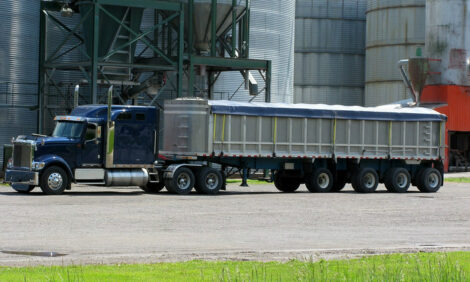



IPPE: How Automated Vaccine Delivery Could Help Poultry Producers
US - Speaking at the International Poultry Scientific Forum in Atlanta yesterday, Joseph Purswell from the USDA-ARS Poultry Research Unit described the results of an interesting study looking at improving biosecurity whilst vaccinating poultry.Traditional methods of vaccinating poultry often involve disturbing their peace and increasing biosecurity risks.
For example, an operator entering the poultry house to spray vaccine using a backpack-mounted device increases the likelihood of pathogens being brought into the barn.
Mr Purswell told delegates that looking back on recent poultry disease outbreaks, such as the huge outbreaks of avian flu across the US last spring, producers really need a way to vaccinate many birds quickly if a disease event occurs, without human intrusion.
He said that although vaccines are often added to poultry water supplies, there can also be problems with this method such as contamination.
To solve these problems, Mr Purswell and his colleagues developed a new, fully automated system for spraying the vaccines inside the barns.
The idea behind the machine is to trigger birds to drink from the water lines using changes in lighting or other factors.
After the birds go to the water lines, the vaccine spray nozzles are lowered from the ceiling and spray the birds. The nozzles are strategically placed above the water lines, to ensure maximum coverage over the birds.
The target is the important eye area, where scientists know that vaccines are easily absorbed by the birds, but the vaccine will also be picked up by the birds through preening and contact with other birds.
"Getting good coverage all over the flock is really the critical thing," emphasised Mr Purswell.
Mr Purswell showed in a video of a pullet house how the spray irritates the birds and causes them to run away from the spray nozzles.
When the birds run away, the spraying stops until the birds decide to wander back to the water lines, when they are sprayed again, ensuring that vaccines are not wasted and the birds are covered as much as possible.
In what Mr Purswell described as a sort of 'ping-pong' game, the spray nozzles in different areas of the house are turned on at different times, so when the birds run away from one spray, another is turned on, so they are directed towards the vaccine.
The scientists compared the performance of the automated system against a three-man vaccination crew with backpack sprayers using a combination infectious bronchitis (IBV) and Newcastle disease (NDV) vaccine.
The results of the blood samples taken from automatically vaccinated flocks showed improved immune protection against the viruses compared with the backpack method, as well as reducing biosecurity risks and the number of personnel required to vaccinate a flock.
Mr Purswell said he and his colleagues hope to get a commercial version of the technology up and running soon.









